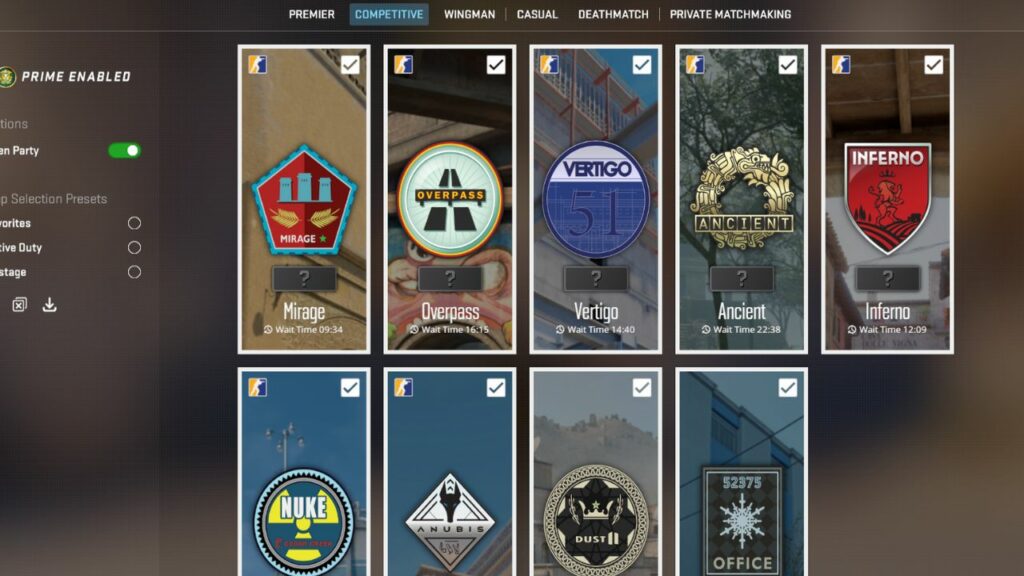BTOB Insights
Exploring the latest trends and news in business and technology.
Map Veto Madness: How CS2 Players Strategically Eliminate Their Terrain Troubles
Discover the secrets behind CS2 players' map veto tactics and how they conquer their terrain troubles for ultimate gameplay success!
Understanding the Map Veto Process in CS2: Strategies for Winning Gameplay
Understanding the Map Veto Process in CS2 is crucial for teams looking to gain an edge over their opponents. The veto process typically begins with each team having the opportunity to eliminate maps from the pool, leading to a battlefield that plays to their strengths. For example, a team that excels in long-range combat may prefer to remove maps like Inferno, opting instead for Dust II or Mirage. It is essential to analyze your team’s playstyle and previous performances on different maps to make informed decisions during this phase.
Moreover, effective communication and collaboration during the veto process can significantly impact the outcome of the match. Teams should engage in open discussions to highlight their individual strengths while considering the opponents' weaknesses. Creating a prioritized list of maps—starting with those you're most comfortable on and ending with those you want to avoid—can streamline the decision-making process. Ultimately, mastering the Map Veto Process not only sets the stage for a winning strategy but also fosters a stronger team dynamic as everyone contributes to the team’s success.

Counter-Strike is a popular tactical first-person shooter (FPS) game series that emphasizes teamwork and strategy. Players choose to fight as either terrorists or counter-terrorists in various game modes. For players looking to improve their gameplay, understanding maps and communication is crucial. For example, familiarizing yourself with anubis callouts can significantly enhance team coordination and overall performance in matches.
Top 5 Maps Players Love to Veto in CS2: A Comprehensive Guide
In the competitive landscape of CS2, players frequently encounter maps that they would prefer to avoid during the veto phase of match preparation. This phase is crucial, as it can significantly impact a team’s overall performance. Here are the Top 5 Maps Players Love to Veto:
- Dust II
- Mirage
- Inferno
- Overpass
- Nuke
Each of these maps comes with its own unique set of challenges that players find difficult to navigate. For instance, Dust II is infamous for its tight choke points, which can lead to early eliminations. Meanwhile, Nuke's verticality can be overwhelming for teams unaccustomed to its layout. Understanding these common vetoes helps players strategize better and enhances their chances of securing a favorable match-up. By analyzing the reasons behind these vetoes, teams can reassess their map pool and improve their overall gameplay in CS2.
How Do Map Picks and Vetoes Impact Competitive Play in CS2?
Map picks and vetoes play a crucial role in shaping the strategic landscape of competitive play in CS2. Each team has the opportunity to select and eliminate maps from the pool, which serves as a fundamental aspect of their overall strategy. This process often reveals insights into a team's strengths and weaknesses, as well as their preferred play style. For instance, a team that excels on Dust II may prioritize its selection, while a squad known for its tactical prowess on Inferno might choose to eliminate maps that favor aggressive playstyles. Understanding these dynamics is essential for fans and analysts alike, as they provide context for the showdown ahead.
Moreover, the impact of map vetoes extends beyond mere selection; it can influence the mental state of the teams involved. Teams that are forced to play on uncharted territory might struggle to maintain their usual performance levels, which can lead to unexpected outcomes in matches. As such, analyzing map picks and vetoes not only gives insights into tactical approaches but also provides a glimpse into the psychological warfare that often unfolds in competitive CS2. By considering a team's history with particular maps and their approach to the veto process, fans can gain a deeper understanding of the intricacies of high-level gameplay.